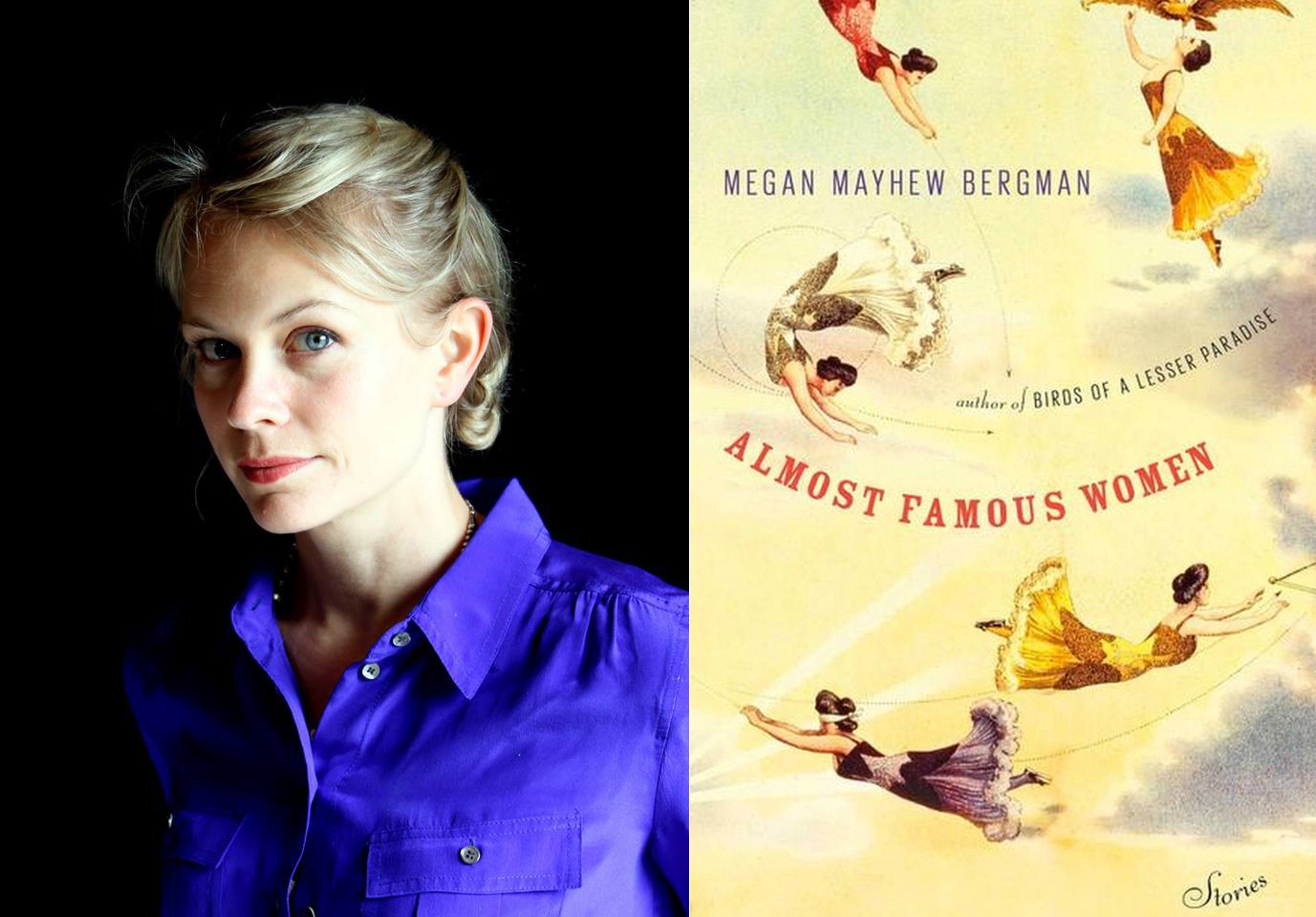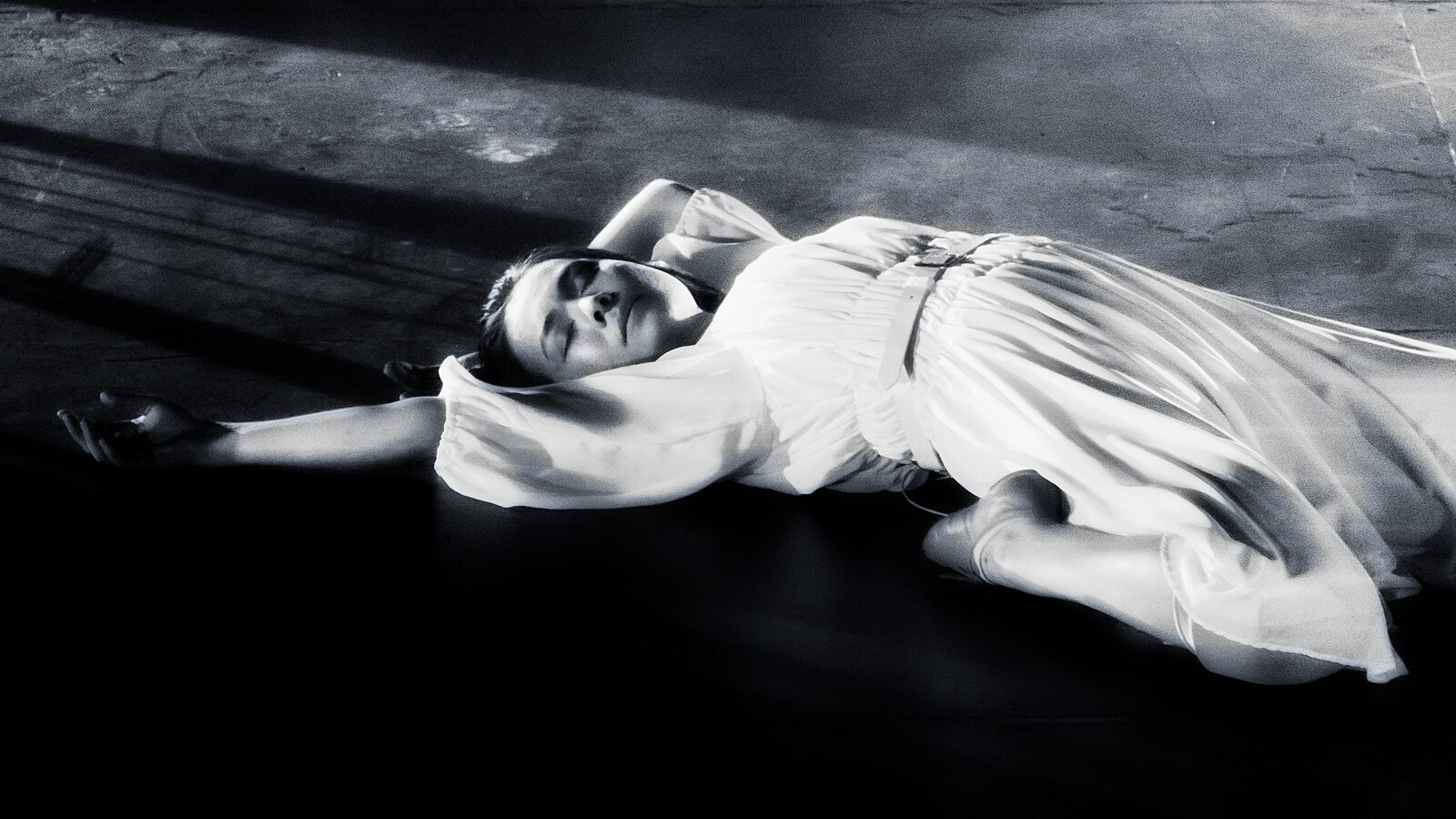interviews
INTERVIEW: Megan Mayhew Bergman, author of Almost Famous Women

There’s a certain brand of writing advice which puts forth the idea that the point of writing is to get on paper that which would otherwise be lost, would evanesce, but what if, like Megan Mayhew Bergman, your subject matter is precisely that: that which has been lost? The characters who inhabit the stories in Almost Famous Women — Bergman’s follow-up to her terrific debut collection, Birds of a Lesser Paradise — are driven to be remarkable and desperate to be known. They are willing to run the risks of living unconventionally, but still long for some kind of preservation. They have fraught desires that are so often in opposition with one another, and it’s at this point of friction that Bergman locates her stories: navigating the relationship between rebellion and remembrance, actualization and aberrance. She examines with virtuosity the knotty longing of these women — occasionally compromised by their own self-erasing reclusiveness, but more often subjected over time to historical revisionism and cultural amnesia. As deft and inventive a writer as she is — and she wows on every page of this collection, at the language level, especially — Bergman can’t resurrect these women, not truly. She knows she is working with what has already been lost. But what she can do, and what she does do ever so movingly here, is thoughtfully imagine herself into and out of history, sending us missives from that place, giving us a better sense of what it meant to be daring and assigning dignity to women whom history has denied it.
Bergman graciously took time to answer a few of my questions by email.
Vincent Scarpa: It might seem like a rather basic question, but I’m genuinely interested in how you came to write these stories. Did you start out intending to write toward a themed collection, or did the stories just begin to accrue and suggest one?
Megan Mayhew Bergman: If there’s anything I’m good at, it’s cultivating an obsession. I have a gritty work ethic, and can be very driven, but I also move very instinctually. So I didn’t consciously set out to write a themed collection, but I must have been moving toward it subconsciously. The stories were written over a five year span.
I actually tried very hard not to write this collection. I felt weird about writing historical fiction, moving in and out of factual data and letting my imagination take such liberties. But two things helped me move through that personal objection:
1) Most of these women had one biography, if that, some out of print, and were largely out of the public consciousness. There was so much unknown space in these women’s narratives that my imagination couldn’t help but seep into the gaps and expand, filling in the cracks.
2) Henry James, in his Art of Fiction essay, says that all novelists should have freedom. So I said to myself–look here, MMB. Don’t be puritanical. If you have damn good stories to tell, tell damn good stories.
VS: One of the things I find most moving and thoughtful about the collection is that, in choosing to resurrect these women, you’re not interested in drastically rewriting or revising or playing with them so much as simply imagining yourself into their interior landscapes and then writing outward from there. There are, of course, many creative liberties taken — “I did not stay inside the lines,” you write in your author’s note — but they’re taken in empathetic service of more closely getting at the truth of what it might have been like to be these women. I think there’s something to be said for the beauty and generosity of that practice — a certain admirable faithfulness, if not strictly to “the facts” — especially when one considers the kind of erasures and rewrites history has enacted on these and so many other women throughout history. I wonder if you could talk a bit about what you felt your duty was, then, in reviving these women and writing their stories. Was there a methodological framework you put yourself and the stories through or up against?
MMB: I taught a memoir class at Bennington College once, and we spent a lot of time talking about truth, and how it’s a concept writers of all genres circle, but it is in many ways an abstraction. There is very little written truth. It comes down to intention, I think, and I used that as a guiding principle. My intention was to honor the risks these women took to live outside of a traditional patriarchal arrangement, and, as you suggest, shed a wedge of light onto their interior landscapes. So, I did my damned academic best to honor their interior lives and the historical and personal events that shaped them–but I had no problem making up a probable girlfriend from scratch, and dropping her into the rocky orbit of one of these women.
Biographers are cautioned not to fall in love with their subjects, not to make heroes out of them–and that was important for me as well. I did not want to over-romanticize these women, or write a book with a feminist agenda in neon lights (okay, it’s more, say, fluorescent bathroom bulbs). I feel strongly that the writer’s agenda or theme should be secondary to the story itself.
A lot of these women were not traditionally likable characters–they abandoned families, churned through lovers, battled addictions, and some lived life with single-minded focus. Right now, I feel that short fiction is suited to carry these dangerous and “unlikeable” female protagonists. In many cases, short fiction is less bound to that commercial Female Likability Thing. Because, you know, less people read it. (I’m not getting off on that at all, believe me.)
VS: I know a great deal of research went into writing these stories, and I would guess that you came across far more information than you could ever use or the story could ever contain. Amy Bloom has this great line (that I’ll poorly paraphrase) about researching being analogous to walking through a garden: you can spend as much time there as you like, but it’s ill-advised to take more than a few flowers with you. Jim Shepard says something similar about not needing to know how to mountain climb in order to write a story about mountain-climbers, but needing to know enough to believably render a character who does. What was the information-gathering and filtering process for you in writing these stories? How did you go about deciding which were the right flowers to take with you? I’d imagine there’s some difficulty in disregarding what might be the most seductive or bizarre information in favor of including only the information necessary to texture the narrative.
MMB: Almost Famous Women, more than anything, represents my reading life. I love reading biographies and memoirs of fascinating, unusual women. My favorites include Francoise Gilot’s My Life With Picasso, Martha Graham’s Blood Memory, Beryl Markham’s West With the Night, Isak Dineson’s Out of Africa, and the biography of Edna St. Vincent Millay, Savage Beauty. Give me a woman who is out there gnashing her teeth at life, and I’m hooked.
So, I had been reading the books where the women in my book appeared as secondary characters for years before I decided to start writing their stories. In fact, I fought off writing this book for so long that some of the stories were nearly fully-formed in my head before I put pen to paper. I had to submit to the personal muse, really.
Here’s an example of a research “flower” I didn’t bring with me to the page–the doll Joe Carstairs took everywhere with her (on her motorcycle, in her boat, and to the grave)–Lord Tod Wadley. She bought expensive suits for him, photographed him…but I knew he would push the reader into WTF territory. But you have to read the Kate Summerscale biography of Joe Carstairs–The Queen of Whale Cay. It’s incredible.
VS: You write in your author’s note, “I wanted to explore the price paid for living dangerously…though I did not intend these stories to serve as cautionary tales.” What were the challenges — both on the story level and the global level — in dancing that dance? What pitfalls did you seek to avoid?
MMB: Early on in the construction of the book, I realized that a lot of these women died poor and alone. I didn’t want to undermine the strength of these women by writing stories that overtly cultivated the reader’s pity. I also didn’t want the book to be Almost Famous White and Straight Women.
I think many of these women were keenly aware that if they chased dreams instead of building families or setting up camp under the safety of a husband, they would face challenges later. There is a line in the book that underscores this idea: the world has not always been kind to its unusual women. I’d like to say that these women faced heightened risks for living authentically in a different era, but some of their stories still read as fresh and unusual even for contemporary culture.
Tiny Davis, a trumpeter featured in one of the stories, says something akin to this in a documentary: “Times won’t ready for us. Still ain’t.”
I’ve come to believe that we’re all navigating this risk/safety continuum for ourselves, too, or perhaps I’m skewed from moving among artists and dreamers. We want autonomy, the peak experiences, the peak feelings, the moments–however fleeting–of intense love, lust, achievement. And yet so many of us, myself included, dilute ourselves, temper our wanderlust, and make compromises in order to feel safe, or in order to just live. But we love reading about the people who don’t make compromises. I happen to love a good kick in the ass from history.
I’m not a fan of the moral filter in fiction. I don’t want to write about what we should think, feel, or do. I want to write about our ugly, exquisite humanity, our desperate inner selves navigating the world’s obstacles.
VS: Were their women whose stories didn’t make the final manuscript? Or women whose stories you wanted to write but, for whatever reason, found yourself unable to imagine a sustainable way into or out of?
MMB: Truthfully, I wanted to feature some female scientists, but I never got those stories off the ground (thankfully Amy Brill and Lily King have! Read The Movement of Stars and Euphoria!). I might find my way into the female scientist stories later — I’m particularly obsessed with Rachel Carson, as any good environmentalist should be. I have a background in anthropology and if I cared for complex math I would be a primatologist. But I don’t care for complex math, and so I’m here to write stories.
VS: How did you go about deciding which women to inhabit in first person as compared to third person? And what about the women — I’m thinking especially of Romaine Brooks (“Romaine Remains”) and Allegra Byron (“The Autobiography of Allegra Byron) — whom the reader comes to know indirectly, by way of an imagined character in their lives. What was the construction process there? It’s such a fascinating alternation of vantage point — and used so beautifully here. The Byron story left me weeping in a way short fiction hasn’t left me since I first read Laura van den Berg’s story “Antarctica.”
MMB: God, I love making people weep. No, really. Because I’m a weeper (you know what made me weep the other day? Charlie Bucket’s poverty and hope in the early minutes of Willy Wonka and the Chocolate Factory.) But weeping–it’s catharsis, evidence of narrative at work, and it means a story has been successful in some way. So I take your weeping as an extreme compliment.
Some of these women were hard to crack for me. Here’s why–most of them were naturally bold and intrepid. I have to give myself a pep talk in the shower to come off as bold, or listen to “Eye of the Tiger.” I’m sort of kidding–but some of the greatest work I’ve done in life is reminding myself of my value, finding a voice, finding confidence. I have it now, but man, I fought for it. With myself.
As for first versus third person–my first strategy is always to listen to the muse. That’s my fancy way of saying that I listen to the voices in my head. (You have them too, right?!) But usually the first line or two comes to me and offers the way into a story, and usually that spiritual moment tells me if a story is in first or third. If that sounds crazy, good. It is. I think writing is mostly hard, technical work, but I’d be lying to you if I said I didn’t work from the muse first.
VS: What’s next for you, now that Almost Famous Women is out in the world? You’re at work on a novel, yes?
MMB: I’ve been very good at throwing away novels lately. I’m after magic, not proficiency, and I don’t want to sell you an adequate book. I know what it’s like to have to stand behind your work. You have to LOVE it. So yeah. I am working on a novel. I have more ideas than time. My next personal mandate is to MAKE TIME.









